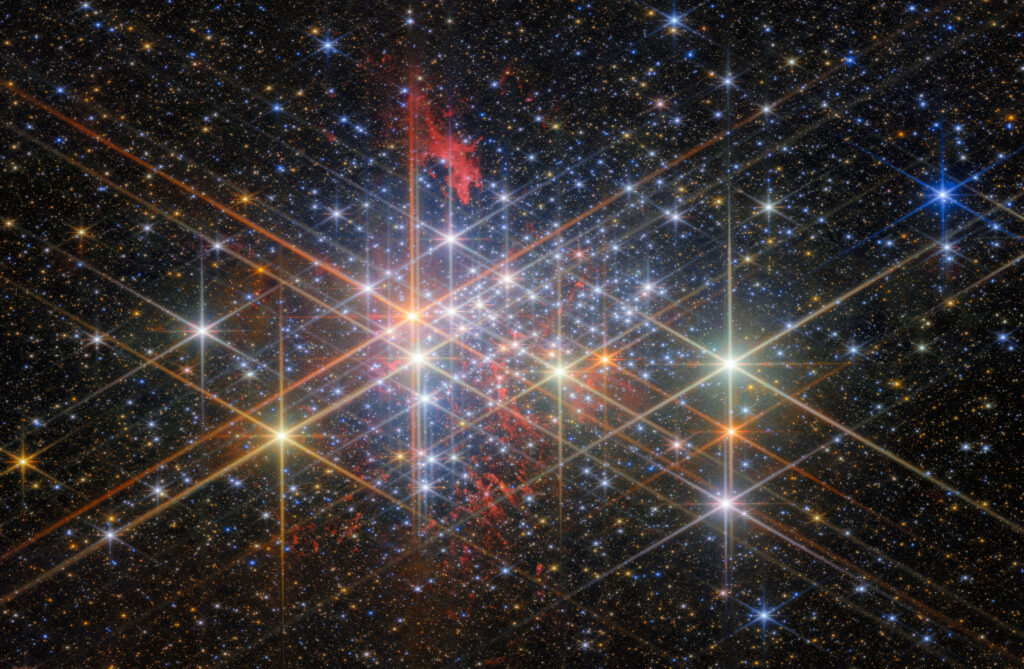Astronomers working with the James Webb Telescope (JWST) have published an image of one of the most interesting objects in the Milky Way. It shows the Westerlund 1 super star cluster.

Now only a few stars form each year in the Milky Way, but the situation was quite different in the distant past. Star formation probably reached its peak around 10 billion years ago. At that time, dozens or even hundreds of stars were born in our galaxy every year. Since then, this figure has been steadily decreasing.
Astronomers believe that most of the ancient star formation occurred in massive clusters, also known as super star clusters. Their mass exceeded the solar mass by at least 10,000 times, and they were “packed” into an incredibly small volume. Now there are only a few of these super clusters left in our galaxy.
The largest and, at the same time, the closest to Earth among the Milky Way super star clusters is Westerlund 1. It is located at a distance of 12,000 light years from Earth. Its mass is from 50 to 100,000 solar masses, its age is from 3.5 million to 5 million years.
The uniqueness of Westerlund 1 lies in its large, dense, and diverse population of massive luminaries, which has no analog in other known clusters in the Milky Way. Everything from Wolf-Raye stars to yellow hypergiants can be found there. If our solar system were at the center of this amazing cluster, Earth’s sky would be filled with hundreds of stars as bright as the full Moon. Westerlund 1 contains so many massive luminaries that more than 1,500 supernovae will erupt within a period of less than 40 million years. The assumption is that it is likely to change from an open cluster to a globular cluster in the future.
All of this makes Westerlund 1 an ideal natural laboratory to study the formation and evolution of massive luminaries. Observations of JWST have helped to detect its population of low-mass luminaries and to study the environment around the most massive stars. This will help astronomers understand how feedback (stellar winds, supernovae, etc.) affects the environment and the overall star formation process in their parent clouds.
You can also read how a “tripled” supernova helped James Webb calculate the expansion rate of the Universe.
According to Esawebb


